#clover cotton’s cookbook
Explore tagged Tumblr posts
Text
Clover Cotton’s Cookbook: pumpkin spice muffins
Hello dears, I am sorry I could not share another recipe sooner but there has been much to do lately. Bag End was in a bit of an uproar what with Master Baggins leaving with the Elves, then my niece got the chicken pox and I went to help Rosie around the house and I didn’t have time for much else until now.
But enough blabbering, here is the recipe! The pumpkin spice muffins are the perfect treat for autumn, especially served for tea with a warm cup of black tea or even at first breakfast for the ones with a sweet tooth.
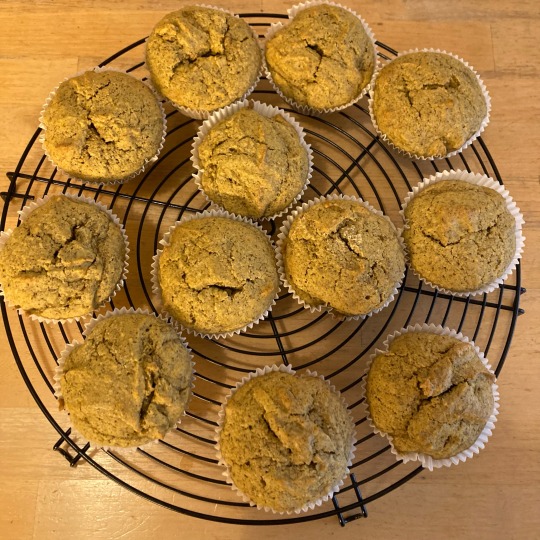
The measure unit for this recipe is a cup. A literal drinking cup. The one I use is a 150ml coffee cup, which gives a dozen chunky muffins. If you live in a country that uses cups as a standard measure unit, use it and it should work all the same. It’s not so much the exact measurements that matter for this recipe as the ratios between ingredients.
Ingredients:
1 cup of mashed red kuri squash (or butternut squash if you can’t find the former, but its less tasty)
cinnamon and anise according to personal taste
2 cups of sugar
3 cups of buckwheat flour
a pinch of baking soda
2 eggs
1/2 cup of sunflower seeds oil or equivalent
Recipe:
Cut the squash into small bits and steam cook it. You can also boil it but I find it makes the batter much more waters and less pleasant to work with.
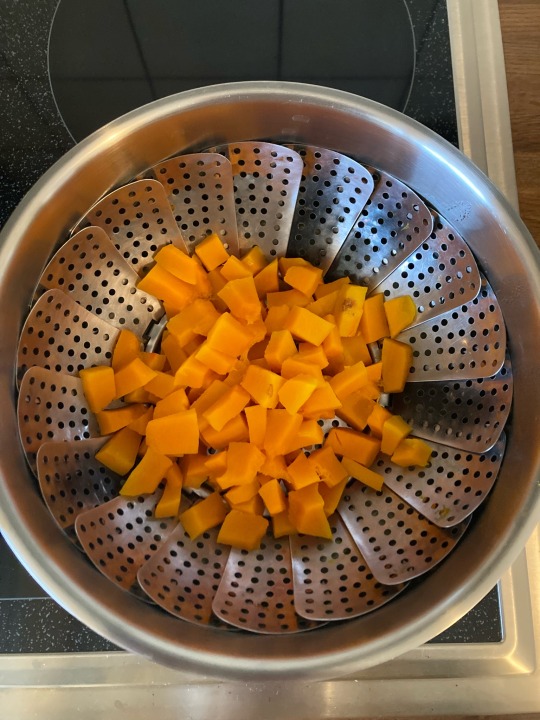
When the squash is soft enough to be mashed with a fork, let it cool for a few minutes then mash it until you have a thick, smooth paste.
Pre heat your oven at 180°C
Add ground anise seeds and cinnamon to the mashed squash. Anise has a very strong flavour so use way less of it than you think you should, it will still pop through the rest of the flavours and leave a pleasant aftertaste. I also personally like to ad the smallest dash of curcuma in the mix as well, just for the additional colour and flavour.
Add the sugar to the mashed squash and mix until you obtain a thick, almost liquid batter.
Add the flour, mixing thoroughly in between each cup. Add the baking soda with the flour. If the batter becomes too thick, add the eggs before the last cup of flour.
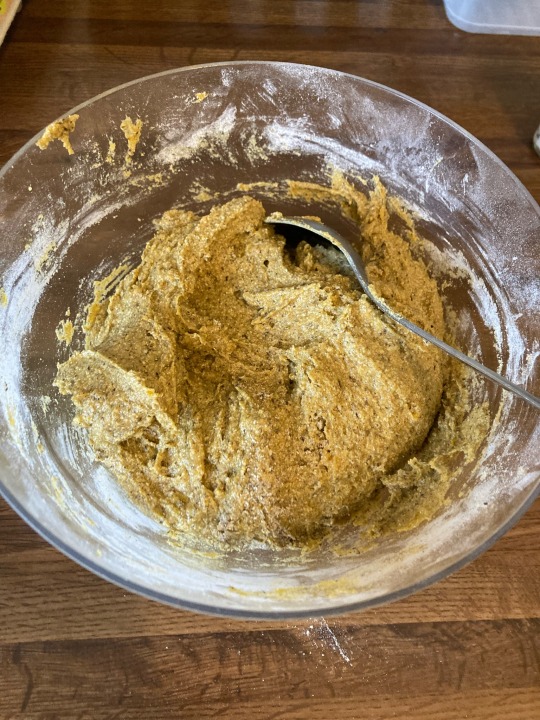
Once you have a thick batter, almost like bread dough, add the sunflower seeds oil and mix until you have a homogeneous and sticky batter.
Put the batter in a greased or oven-paper covered muffins tray and bake for 25-30 minutes, until a knife blade stuck in comes out clean.
Enjoy!
#clover cotton#clover cotton’s cookbook#gluten free recipes#pumpkin muffins#gluten free#muffins#autumnal recipes#hobbitcore
23 notes
·
View notes
Text
Fruits of the Summer
My grandmother’s clearest memories of childhood revolve around fruit. She and her sisters would arrive at the farmhouse for the summer—“Oh, here are my girls!”—and her grandmother, who read to them by the light of a kerosene lamp, would shower her with attention, love, books, figs, and peaches. True love, she says, is how her grandfather treated her grandmother: he ran the first fresh fig of the season to the house for her. Nana found and married a man who cared as deeply as she did about fresh fruit; Papa was filled with joy when, at the height of the Depression, he got an orange for Christmas.
The king of all fruits is the peach, my favorite taste in the world. Each summer, we buy peaches in the upstate of South Carolina, where the peaches are firm and tasty and full, and I share a peach with my grandmother. For the first peach of the season, Nana injects a particular sense of humor into T.S. Eliot’s famous line: “Do I dare eat a peach?”
(When Billy Collins came to visit Hopkins, he accused the Romantics and their heirs of having taken the humor and the sex out of poetry; Wordsworth, he claimed, focused on the splendor of the grass at the expense of the erection. Collins, as he spoke to our student body, took particular issue with T.S. Eliot: “’Do I dare eat a peach?’” he recited, before pushing his glasses onto his bald head. “What’s your problem, man?”)
This summer, my parents stopped by Dori Sanders’ peach farm by the side of the road in York County, where the history is as ripe as the peaches. Take the Storytelling Rock, for instance, an ancient rock that resembles diverging trees. At fifteen feet tall, the freestanding rock casts a long shadow, in the shade of which Ms. Sanders and her family would trade stories and tales. Sanders’ farm was one of the first and one of the only Black-owned properties in South Carolina. Unlike many Black families after “Pitchfork Ben” Tillman spearheaded the post-Reconstruction State Constitution, her father, a rural elementary schoolteacher, was able to buy the land outright and was not a sharecropper.
In addition to her wonderful cookbooks, Ms. Sanders has written several novels—and her first, Clover, won the Lillian Smith Book Award in 1990. The award is given to a Southern book of high literary merit that touches upon “the problem we all live with” lucidly and with understanding. (Lillian Smith, the prize’s namesake, is one of the essential thinkers in the years leading up to the Civil Rights Movement; her meditations and memories in The Killers of the Dream are among the most beautiful and heartbreaking. Her novel Strange Fruit is similarly bracing and horrific, touching as it does upon the steeped taboos around interracial love.)
Reading her books and eating the peaches from her farm, I think of more than just Eliot and strange fruit. As I slice the fruit and throw away the pit, the finale of Nina Simone’s “Four Women” plays in my head: “What do they call me? My name is Peaches.”
In I Put a Spell on You, Nina Simone discusses the inspiration for “Four Women” as an exploration of the type of self-hatred that needles its way into Pecola Breedlove, the internalized racism of beauty standards and perception: “The women in the song are black, but their skin tones range from light to dark and their ideas of beauty and their own importance are deeply influenced by that. All the song did was to tell what entered the minds of most black women in America when they thought about themselves: their complexions, their hair—straight, kinky, natural, which? And what other women thought of them. Black women didn’t know what the hell they wanted because they were defined by other things they didn’t control, and until they had the confidence to define themselves they’d be stuck in the same mess forever—that was the point the song made.”
“Four Women” is made up of four monologues; the melody is simple and repetitive, and the monologists have distinctive voices, stories, and skin tones. Autobiographically, the song plays a significant role in the arc of Nina’s career; in her fabulous book The Sound of Soul, Phyl Garland lingers on the momentous occasion of this song’s release, noting that it came alongside the singer’s own metamorphosis. Nina, she wrote, “has abandoned the straight-haired image of her supper club days to wear a natural hairstyle.”

At the end of her monologue, each woman asks, “What do they call me?”—making the woman the object, not the subject, and suggesting that these names came from the outside in, reiterating that naming belongs not to the named but to the namer. The first woman to sing is “Aunt Sarah,” perhaps a reference to Mammie and Auntie; she is black and her hair is wooly. Then there’s Saffronia—a name derived from “saffron,” fitting for a High-Yellow daughter of rape. “Sweet Thing,” whose skin is tan and whose hair is fine, explains that she belongs to anyone “who has money to buy.”
Peaches—“My skin is brown, my manner is tough.”—is the fourth and loudest woman to sing. There is something different about her from her very first word: “My,” which she intones with a vicious and determined possessiveness. Throughout the monologue, there is an incredible torrent of anger simmering not beneath but all around. The central Discordia concors, what Dr. Johnson called “the most heterogeneous ideas yoked by violence together,” is the clash between “Peaches” and the overall tone: “I’m awfully bitter these days / because my parents were slaves.”

Jay Z takes the opening chords of “Four Women” for the beat of “The Story of O.J.” and splices “My skin is…” between notes. Like “Four Women,” “The Story of O.J.”—only half-experienced if you just listen; the music video is essential to understanding the motivations behind and messages of the song—starts with childlike simplicity, the unsettling sound of forced cheerfulness that we have come to associate more with the dystopian Bioshock and Fallout than with fond childhood memories. Like the almost-saccharine “Run, Rabbit, Run” in the opening scene of Get Out, the melody does more to alarm us than comfort us.
Jay Z frames his song as an old cartoon: the title screen is a cotton plantation, the characters drawn as actors in blackface—dark, dark skin and light, light lips. Like Disney’s Zip-a-Dee-Doo-Dah, the world seems to dance; buildings lean to and fro, bales of cotton cheerfully hop into the mill to become Klan robes, chained slaves bob up and down like birds on a wire. The first character we see is an adaptation of Nina Simone, portrayed as both an African queen—the proud Mende woman she dressed as in Harlem, for instance—and an anthropomorphic caricature.
The constant refrain lists a variety of pigmentation and class and “race feeling.” Despite their differences—“Light n-, dark n-, faux n-, real n-, rich n-, poor n-, house n-, field n-”—they all share the same fate: “Still a n-.” Images complement the lyrics: militant black power—“still a n-”; Olympic athlete—“still a n-.”
Like Nina’s four women, these disparate types all must reconcile with the fact that there is no running from their own blackness: “My only sin,” as Louis sang, “is in my skin.” Jay Z brings up O.J. Simpson, namesake of the song, early on and only very briefly: “’I’m not Black! I’m O.J.,’” he quotes the infamous football player, before rolling his eyes and saying, “OK.” Like Oedipus, the faster you try to outrun reality, destiny, fate—or drive away in a white Bronco—the faster that fate will find you.
In The Wire, Stringer Bell tries to break out of the world he was born into by attending finance courses at his local community college. He studies real estate and equity; he shares his ideas of legal expansion with a glimmer in his eye. Yet for all of his attempts to outrun his own background, that world outside of his own pushes him back and lynches him with the ropes of his own ambition. You can launder money, but you can’t launder your identity—as the waiter makes painfully clear to D’Angelo in the fancy restaurant.
“Still a n-”—the last line Jay Z raps—are imagined as the dying words of a lynched Jaybo, his cartoon alter ego, while a young white boy, a spectator of and participant in the hanging, smiles for the camera.
The sequence that struck me comes after the first catalogue of “types”: Jaybo eats a watermelon and spits out the seeds the way that Buckwheat or Bojangles may have. The pervasive watermelon stereotype brings to mind Jacqueline Woodson’s beautiful writing—not just in Brown Girl Dreaming but also in her response to Daniel Handler’s horrible joke at the National Book Award ceremony—and, of course, Flannery O’Connor. What Woodson describes—a song “illustrated with caricatures of sleepy-looking black people sitting by trees, grinning and eating watermelon”—is the only background that makes The Grandmother’s joke in A Good Man is Hard to Find a joke: the punchline hinges on a racist assumption that any Black person would eat a watermelon labeled “E.A.T.”
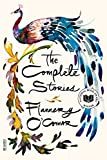
More moving and exhaustive, however, is O’Connor’s short story “The Artificial N-,” in which Mr. Head and his grandson, Nelson, come face-to-face with stereotypes that they did not create, but daily perpetuate. Early in the story, Nelson does not recognize a black man—he cannot puzzle out why his grandfather sees the man as either unique or different; to Nelson, he just appears to be a well-to-do man. After the Black man gets off the train, Mr. Head explains to the man across the aisle that the gentleman was “[Nelson’s] first n-.” After they become lost in the Inferno-like labyrinthine maze of Atlanta—two country bumpkins in the big city without any Virgil to guide them—they encounter the “artificial n”: a lawn-jockey, a representation of absolute human misery in the inhuman and inanimate.

The forced smile, a “watermelon grin,” so to speak, appears unsettling rather than humorous. O’Connor’s use of the passive voice and her literal description of a smile—“He was meant to look happy because his mouth was stretched up at the corners but the chipped eye and the angle he was cocked at gave him a wild look of misery instead.”—combine to produce a heartbreaking rictus of cheerfulness, like the enslaved and transmuted inhabitants of the family estate in Get Out. And, like the opening bars of “The Story of O.J.,” the smile so badly fits the lawn jockey that it alarms and alienates Mr. Head, Nelson, and the reader.
And yet it is this “artificial n-” that brings Mr. Head his first moment of clarity in the story, his first opportunity to receive mercy. In the moment of transfixion, the grandfather and grandson, previously wildly disparate beings, are unified: “The two of them stood there with their necks forward at almost the same angle and their shoulders curved in almost exactly the same way and their hands trembling identically in their pockets. Mr. Head looked like an ancient child and Nelson like a miniature old man.”
Richly, their choreographed movement is modeled unconsciously after the lawn jockey. The lawn jockey, “about Nelson’s size,” “was pitched forward at an unsteady angle”—just the way that grandfather and grandson lean forward. And just as Mr. Head and Nelson chiastically coalesce in age, “it was not possible to tell if the artificial Negro were meant to be young or old; he looked to miserable to be either.” Visually, it as though grandfather and grandson lean forward to meet the “artificial n-,” leaning forward himself, in the middle: a kind of mirror that cuts through appearance and shows things as they really are. In this moment, they reverse roles and become united—as old and young and, for the briefest and most fleeting of moments, even black and white.
Looking at misery incarnate—or at least in plaster—opens Mr. Head to mercy, yet he rejects it and pushes it away. Rather than share with his grandson what he had felt, Mr. Head “heard himself say, ‘They ain’t got enough real ones here. They got to have an artificial one.’” Flannery O’Connor deliberately distances these words from his thoughts; rather than simply “saying,” Mr. Head “hears himself say.”
As the grandfather and grandson step off the train—home again, home again—that mercy comes again to Mr. Head, who cannot deny it or shut it out. Then, under the trees and the sky, Mr. Head “understood that [mercy] grew out of agony, which is not denied to any man and which is given in strange ways to children… He had never thought himself a great sinner before but he saw now that his true depravity had been hidden from him lest it cause him despair… He saw that no sin was too monstrous for him to claim as his own….”
Mr. Head sees suffering in the lawn jockey and in himself; he is given the mercy to see clearly even as the paint washes off of the plaster and the jockey’s eyes crack and become mere vacuums. As Aeschylus wrote, “wisdom / comes alone through suffering,” that “grace comes somehow violent.” The wisdom is, alas, lost on Nelson, who breaks the spell and closes the story—the lawn jockey filed away as merely something he has no need to encounter again. For Mr. Head, the lawn jockey provided him his ticket to heaven: “since God loved in proportion as He forgave, he felt ready at that instant to enter Paradise.”
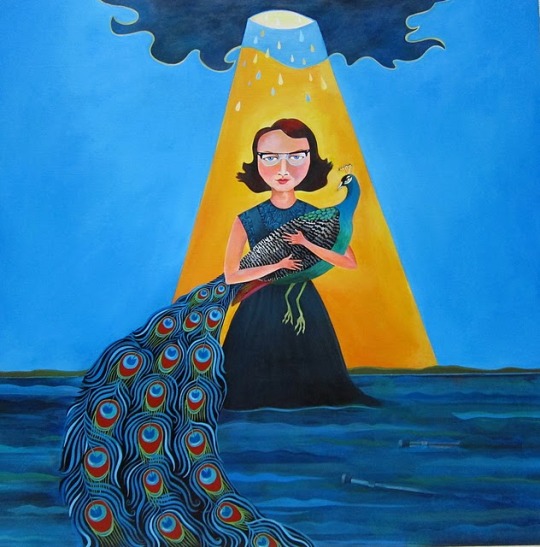
0 notes
Text
Clover Cotton’s Cookbook: summer vegetables pan
Hi everyone, welcome on my blog, I’m Clover Cotton, from Bywater. I admit I was a bit intimidated to share my recipes here but Rosie, my dear sister-in-law, pestered me until I relented. She has quite a temper and a sound judgement so I trust her when she says someone will be interested…
As we have an unreasonably warm summer here in the Shire, I decided to share a staple of my summer recipes, easy and light, for my first post: the zucchini and eggplant pan.

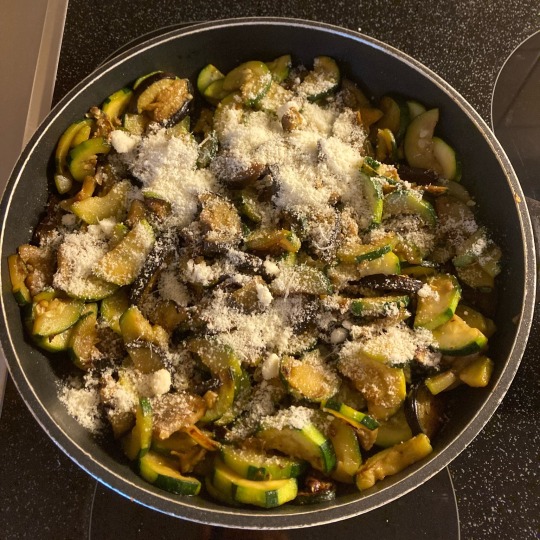
For four hobbits you will need:
a medium eggplant
two to three medium zucchini
one or two cloves of garlic depending on preferences
Parmesan cheese
salt
olive oil
Cut the eggplant and zucchinis in thin slices and put them in a large pan with a generous amount of olive oil. Cut and add the garlic and salt at will.
Let fry on medium heat, stirring frequently, until all the vegetables are soft and a nice golden brown.
Take off the stove and wait until the pan stops steaming, and add grated Parmesan cheese. Stir and serve with rice or pasta for a light and delicious dinner. For days of great heat, it may even be served for luncheon with simple (garlic) bread or crackers.
A few variants include:
Goat cheese instead of Parmesan cheese
Fresh mint chopped and added just before serving
Adding black pepper to the seasoning
So, here’s my first recipe post, hope you enjoyed it. If you wonder, yes, I did write out a canon-compliant backstory worth of a d&d character for Clover Cotton, and yes, I will dump it on you in her various posts. She likes gossips, alright, like any self-respecting Hobbit!
Also, don’t mind the ugly setting of the pics. As much as I’d love to have a giant cottagecore kitchen with a real pantry, I have to make it do with an extremely unaesthetic 80’s rental flat style kitchen. As long as it serves its purpose, I can’t complain 🤷🏻♀️
#clover cotton#clover cotton’s cookbook#hobbit cooking blog#hobbitcore#tolkien#recipe#vegetarian recipes#summer recipes#vegetables#eggplant#zucchini#cooking tag
34 notes
·
View notes
Text
Clover Cotton’s Cookbook: Pasta soup
Hello my dears, it’s Clover Cotton again! I planned to share with you my vegetable hand pies but everyone’s down with a nasty cold here in Bywater and I didn’t have the energy nor appetite to make something as hearty as hand pies.
So here is a perfect recipe for when one’s sick or recovering, the pasta soup is very quick and easy to make and can be adapted to everyone’s taste with minimal effort.

Ingredients (for 1 Hobbit):
500 ml water
1 tablespoon vegetable broth powder or 1 broth cube
About 50g pasta (the best is alphabet pasta but any small-ish sort of pasta that cooks quickly works. If you have nothing suitable at hand, crushed spaghetti are an Italian Grandma approved solution)
1 onion
Kale leaves (optional)
1 egg (optional)
Grated cheese (optional)
Recipe (~10 minutes):
Put the water to boil and chop the onion finely in the meantime.
When the water boils, lower the heat and throw the stock, the pasta and the onion in. Stir.
If you do the version with kale, shred the leaves and throw them in the boiling water with the rest.
If you want a more nutritive version, crack an egg in the pot and stir vigorously until the egg has almost melted in the soup
Pour in a bowl and add a bit of grated cheese if you want.
Enjoy.
If you have broth leftover (and you almost certainly will), you can filter it and keep it in the fridge to make more soup later or simply to sip on it if you want something warm to drink other than herbal teas.
Take care of yourselves and stay hydrated!
#clover cotton’s cookbook#clover cotton#recipe#vegetarian recipes#easy recipes#quick recipes#hobbitcore#soup#pasta
16 notes
·
View notes
Text
Clover Cotton’s Cookbook: cotognata
Autumn is finally here after such a warm summer, and it means I am working hard on jams and preserves. But I wanted to share this recipe for my favourite autumnal sweet: cotognata, a quince sweet. It’s my old gammer’s recipe and, despite requiring very few ingredients, it takes much patience before being able to enjoy the result, not the least because quinces are not the easiest fruits to cook with.

For this recipe I will not give and proportions but ratios. Seven medium quinces will give you about 600 grams of paste. And the fruit-sugar ratio is 1:1
Ingredients:
Quinces
Sugar
A bit of water
Material:
A pan
A bowl
A wooden spatula (event. a whisk)
A large plate
Baking paper
Cook the quinces until they are soft enough for the point of a knife to sink in without resistance. I personally favour the steam cooker because it’s much quicker but boiling them works all the same.

Let the quinces cool for a bit before peeling and chopping them in small bits. Reduce the quinces in a thick, smooth paste with the hand blender.

Put the same amount of sugar as there is quince paste in a pan and let melt with a little bit of water at middle heat (the picture is way too liquid for the purpose but the bubbles should look like that). When the sugar has fully melted and starts bubbling, turn the stove off and add the quince paste until you have a thick, orange mixture.

Turn the stove on low heat and let the mixture simmer for 30-45 minutes, stirring regularly. Lower the heat if the mixture stars making big bubble that pop and splash (warning for the splashes, it burns nastily). The paste will turn a darker orange as water evaporate.

The paste is ready when the spatula or whisk can stand upright by itself. Pour it in a plate covered in baking paper and smooth the surface with a spatula.

Cover with a cotton cloth and let dry for two days before flipping it over on a grid covered with a clean cloth. Cover with another cloth and let dry for another five days before cutting it in little squares and eat.
Store the cotognata in a dry, not airtight box. The paste keeps easily for two weeks (if it’s not eaten before) and will harden slowly.
In honour of Hobbit Day, here’s a long and sometimes discouraging recipe but the end result is entirely worth the hassle. Just be aware you’ll probably start questioning all your life choices leading to this moment halfway through peeling and cutting the quinces, these fruits are a complete pain in the bum to work with.
Also, cotognata is the Italian word for this quince paste, and it comes from ‘mela cotogna’ meaning quince. I learned this recipe from my Sicilian nonna so I use the word she taught me.
#clover cotton#clover cotton’s cookbook#recipe#cooking#fruit paste#quince fruits#cooking tag#hobbitcore
3 notes
·
View notes
Text

Meet Clover Cotton (née Burrows) the new co-admin of this blog. She is a great friend of Rosie Cotton, who introduced her to her brother Jolly, and they were married within a year. Clover loves nothing more than experimenting in the kitchen, much to the delight of her family, and spending time with her numerous nieces and nephews. Her recipes earned her several awards at Hobbiton’s Harvest festival, notably her apple pie.
She will be in charge of the ‘cooking column’ of this blog, when she has time in between babysittings, cooking and baking, and her housekeeping work. All her recipes will be found under the tag #clover cotton’s cookbook
#clover cotton#clover cotton’s cookbook#original character#hobbitcore#cooking tag#tolkien#the lord of the rings
2 notes
·
View notes
Text
The people have spoken! Be ready for Clover Cotton’s Cookbook, the Shire-approved gluten-free recipes blog.
I have compiled a bunch of gluten and often dairy free recipes over the years (mostly sweet) and I’d like to share them but it’s not enough for me to make a side-blog dedicated to cooking and baking only. So, anyone interested in a hobbity series of posts?
16 notes
·
View notes